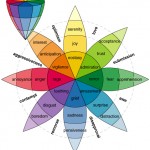Overcoming the Role of Victim or Martyr
| By Jake Lawson
Ten differences between being a martyr or a victim
1. Martyrs are people who recognize they are being taken advantage of and choose to remain in the situation. Victims are people who are taken advantage of but are unaware of being treated as such. Once victims recognize that they are being treated unfairly, they have the choice of remaining in the situation or not. If they stay, they risk becoming martyrs.
2. Martyrs are those who recognize that their rights are ignored and abused but choose to remain in the situation and continue to be treated this way. Victims are individuals whose rights are ignored and abused but were unaware that they would be treated in this manner before they entered the situation.
3. Martyrs are people who let others know how unfairly they are being treated but choose to remain in this unfair position. Victims are people who let others know they have been treated unfairly. They have the chance to leave or change the situation in which they have been victimized. Victims often suffer silently for long periods of time before they are able to verbalize the unfairness of their life situations.
4. Martyrs often knowingly continue to enable or set up situations in which their rights are violated or ignored. This “setting up” is like a prediction or prophecy of failure into which, consciously or unconsciously, the martyrs play, fulfilling the prophecy. Victims often unknowingly set themselves up for continued abuse and violation of their rights. They are often confused and bewildered as to why this occurs. They lack insight into the actions that bring on this abuse.
5. Martyrs often seek sympathy for their plight. They seek support, advice and help from others. Yet they seem stuck in their current course of action and seem to be unable to resolve it. Victims frequently never seek help. They are often frustrated and lost as to what needs to be done to get them out of their current situation. Once victims have been offered help and make a conscious choice to remain stuck in their situation, they become martyrs.
6. Martyrs frequently let the people whom they feel are taking advantage of them know how badly they are being treated. Martyrs often resort to badgering, nagging, scolding, threatening, belittling, antagonizing and verbally putting down those whom they perceive to be taking advantage of them. Victims rarely let the people who are taking advantage of them know how they feel about this treatment.
7. Martyrs often believe it is their obligation to remain in their position in life. They would feel guilty if they let go of the current situation. They fear taking the risk to change the situation. They are apparently comfortable, habituated or submissive to the situation and believe a change would be worse for them and for the others in their lives. Victims often want a change and are desperate for a solution to their situation. As soon as a victim gives in to a situation, choosing not to resolve or correct it, they become martyrs. The saying, “If you are not part of the solution, you are part of the problem,” applies to the martyr’s state in life.
8. Martyrs have a story line which is stereotypical and habitual. They rarely change their tales of woe. One can meet them several years later and find them still suffering from the fate they were experiencing when you last talked to them. Victims experience their plight temporarily, get help and are more apt to get out of the situation. If after getting help and changing, victims experience the same problems later, they could be martyrs at that time.
9. Martyrs often mask their behavior with an aura of willingness and desire for behavioral change in their lives. Usually they are only fooling themselves, since the others in their lives can see by their behavior and attitude that there is no possibility of change. Victims usually are open and honest about their discomfort and willingly seek behavioral change. Their sincerity is easily perceived by others due to the actions and behavioral changes that take place.
10. Martyrs are “professional” help seekers. They make the rounds of paid and volunteer helpers, advice givers, counselors, consultants–anyone willing to listen to their tale of woe. Unfortunately, they usually ignore the assistance, advice or direction they are given. This frequently results in their “helpers” giving up on them in frustration and discouragement. Victims, on the other hand, seek help in a “crisis” only after the pressure of their problems becomes too great for them to bear. They are highly motivated for a “change” and are rewarding people to work with as they and their helpers witness the benefits of the help, advice and direction given.
A comparison of victim and martyr characteristics
Victim : Martyr
1. Usually has short-term problem : Long-term problem
2. Motivated to change : Stuck in their problem
3. Rights violated by others : Rights violated by others
4. Did not choose the problem : Chooses to remain in problem situation
5. Never complains : Complains all the time
6. Lacks insight into problem : Frequently has insight into the problem
7. Unknowingly plays an active part in the problem : Frequently knowingly plays an active part in the problem
8. Doesn’t often seek help : Seeks help all the time
9. Wants to let go of the problem : Holds on to the problem
10. Guilt free : Guilt driven
11. Solution oriented : Problem oriented
12. Powerless due to lack of knowledge : Powerless out of a free will choice to be so
13. Unique problem : Habitual problems
14. Sincere desire to change : Mask of sincerity
15. Honest to self and others about the problem : Dishonest to self and others about the desire to change
16. Hesitant to get help : Seeks out help habitually
17. Reticent to talk about problem : Relishes the attention received in talking about the problem
18. Embarrassed about the problem : Wears problem as a badge of courage (purple heart)
19. Wants a quick solution to their crisis : Creates crises out of everything but blocks all solutions
20. Open to all new ideas : Holds a “yes, but” attitude to all new ideas
What are obstacles facing victims and martyrs?
A. Victims often:
Lack the knowledge that they are being taken advantage of by others.
Are so used to a certain way of being treated that they don’t recognize it as unhealthy for them.
Lack healthy self-esteem or self-concepts.
Have little belief in themselves.
Come from high-stress families where their rights were never respected; therefore, they lack the competencies, skills and abilities to stand up for their rights.
Lack information about assertive behavior and have no experience in using assertive behavior.
Lack of others in their lives who can point out alternative healthy solutions to their problems.
Are timid, scared and suspicious of help being offered to them.
Are skeptical about someone really wanting to help them.
Victims often hold to some of the following irrational beliefs in their lives:
* You must be nice to everyone, even if they are not nice to you.
* Life is supposed to be filled with unhappiness and uncertainty.
* The small guy never wins.
* This is the way things are supposed to be.
* There are winners and losers in all transactions between people.
* My role in life is to be a loser.
* Most people are basically selfish, mean, self-centered and disrespectful.
* You should never complain.
* Take it like a man (woman)!
* Be silent with your feelings.
Victims often do not stand up for their rights because they suffer from the irrational fear of:
* disapproval
* rejection
* conflict
* taking a risk
* the unknown
* change
* confrontation
* being overwhelmed emotionally and physically
* loss of self-respect
* making a mistake
B. Martyrs often:
Are so caught up in their problems that they convince themselves no solution is possible.
Know they are being abused but are so used to it they can’t visualize life any differently.
Lack healthy self-esteem and self-concepts.
Lack belief in themselves or in others.
Had martyr role models in their families of origin and do not see their own behavior as maladaptive.
Lack knowledge of assertiveness and may be either extremely passive or overly aggressive with their antagonists.
Have exhausted all of their outlets of “helpers.”
Find “helpers” hesitant offer assistance; their resistance and “yes, but” statements are too much for the helpers to overcome.
Manipulate their helpers. At first they are cooperative, open, verbal and apparently honest in their assessment of their problems. However, once an objective helper begins to point out the martyr’s contribution to the problem, they feign newer, bigger and more complex problems to keep the helper’s focus off of them.
Martyrs often hold to some of the following irrational beliefs in their lives:
* You must be nice to people no matter how they treat you.
* Everyone needs me and they would be lost without me.
* I am depended upon.
* It is my role to keep everything together, no matter what price I have to pay.
* This is the way things are supposed to be.
* I can never win in the situation I am in, but I can’t leave it.
* I must find a way to pay back those who hurt me.
* I never get angry; I just get revenge.
* My behavior is healthy, OK, but misunderstood by others.
* The louder I complain, the greater the chances of being heard.
Martyrs often do not take the action required to resolve their problems because they suffer from the irrational fear of:
* letting go
* taking a risk
* feeling guilty
* being blamed for the problem
* being seen as the real problem
* being ignored in the future
* being happy, peaceful or content
* change
* loss of approval
* losing the person(s) who are taking advantage of or abusing them
Steps to help you decide if you are a victim or a martyr and how to change your behavior
Step 1: Make an honest assessment: Are you a martyr or a victim in the problems facing you? Study the comparisons and characteristics listed above to help you recognize your behavior. Complete the following statements in your journal:
a. I can honestly say that I am currently functioning as: (1) a victim, (2) a martyr, (3) a little of each, (4) neither of the above, but as a ( ).
b. I know I function this way because:
c. My current problems include:
Step 2: Once you have identified the role you are playing in your current problem(s), identify (in your journal) the obstacles keeping you from moving forward:
a. As a (victim/martyr) I am faced with the following obstacles to correcting my current problem:
b. I have the following irrational beliefs:
c. I have the following irrational fears:
d. Obstacles include the following lack of knowledge, information, behavior and attitudes:
Step 3: Once you have identified the obstacles, utilize the following skills and principles presented in the Tools for Coping Series:
a. Refuting Irrational Beliefs [Tools for Personal Growth]
b. Self-Affirmation [Tools for Personal Growth]
c. Risk Taking [Tools for Personal Growth]
d. Guilt Reduction [Tools for Personal Growth]
e. Letting Go [Tools for Handling Loss]
Step 4: If completing Step 3 does not create a change in your behavior, try one of the following alternatives:
a. Ask the people in your life if they see you acting as a victim or martyr regarding your current problem. Share this material with them to help their response. Use their feedback to assist you in clarifying your reactions to your problem. Use their feedback to motivate a change in your behavior.
b. Take an informal poll of people as to which role they would prefer to play in life: victim or martyr. In your poll find out what their perceptions are of the two roles and the differences, if any. Ask them to clarify which role is more respected by others. Finally, have them give you examples from literature, history, TV, movies or real-life of classic victim and martyr role models. Once your poll is completed, review your data. Decide from your findings which role you currently are playing. Use the results of the survey to motivate a change in your behavior.
c. In your journal list the pros and cons of continuing your current course of behavior (be it victim or martyr). Use the list to assist you in deciding to change any unproductive pattern.
d. List those who will be affected if you cease being the victim/martyr. Next to each name, list the positive and negative consequences a change in your behavior will have on their lives. Use this listing to assist you in recognizing that those people will survive your change in behavior. This is designed to motivate you to pursue the necessary changes in your behavior
e. Make a personal inventory up to this very moment in your life as to the benefits and deficits of the pattern of behavior you live, be it victim or martyr. List what you gain from playing this role. Also, list what you lose as a result of playing this role. List what you will lose or gain in the future if you change this role. Use this inventory to stimulate change, since you will have begun to desensitize the fears that are obstacles to change.
Step 5: If Steps 1 through 4 are unsuccessful in motivating a change in your current behavior pattern, you may need to seek professional help. Review Steps 1 through 4 with such a helper.
One big problem a lot of people have is that they slip into thinking of themselves as victims that have little or no control over their lives. In this head-space you feel sorry for yourself, the world seems to be against you and you get stuck. Little to no action is taken and you get lost in a funk of sadness and self-pity.
So how can you move out of that mindset?
1. Know the benefits of a victim mentality.
There are a few benefits of the victim mentality:
- Attention and validation. You can always get good feelings from other people as they are concerned about you and try to help you out. On the other hand, it may not last for that long, as people get tired of it.
- You don’t have to take risks. When you feel like a victim you tend to not take action and then you don’t have to risk for example rejection or failure.
- Don’t have to take the sometimes-heavy responsibility. Taking responsibility for your own life can be hard work, you have to make difficult decisions and it is just heavy sometimes. In the short term it can feel like the easier choice to not take personal responsibility.
- It makes you feel right. When you feel like the victim and like everyone else – or just someone else – is wrong and you are right then that can lead to pleasurable feelings.
By just being aware of the benefits you can derive from victim thinking it becomes easier to say no to that and to choose to take a different path.
It also makes it easier to make rational decisions about what to do. Yes, I know that I can avoid risk and the hard work of taking action by feeling like a victim. But I also know that there are even more positive results if I choose to take the other route, if I make the better choice to take a chance and start moving forward.
2. Be OK with not being the victim.
So to break out of that mentality you have to give up the benefits above. You might also experience a sort of emptiness within when you let go of victim thinking. You may have spent hours each week with thinking and talking about how wrong things have gone for you in life. Or how people have wronged you and how you could get some revenge or triumph over them.
Now you have to fill your life with new thinking that may feel uncomfortable because it is not so intimately familiar as the victim thinking you have been engaging in for years.
3. Take responsibility for your life.
Why do people often have self-esteem problems? I’d say that one of the big reasons is that they don’t take responsibility for their lives. Instead someone else is blamed for the bad things that happen and a victim mentality is created and empowered.
This damages many vital parts in your life. Stuff like relationships, ambitions and achievements.
That hurt will not stop until you wise up and take responsibility for your life. There is really no way around it.
And the difference is really remarkable. Just try it out. You feel so much better about yourself even if you only take personal responsibility for your own life for a day.
This is also a way to stop relying on external validation like praise from other people to feel good about you. Instead you start building stability within and a sort of inner spring that fuels your life with positive emotions no matter what other people say or do around you.
4. Gratitude.
When I feel that I am putting myself in victim role I like to ask myself this question:
“Does someone have it worse on the planet?”
The answer may not result in positive thoughts, but it can sure snap you of a somewhat childish “poor, poor me…” attitude pretty quickly. I understand that I have much to be grateful for in my life.
This question changes my perspective from a narrow, self-centered one into a much wider one. It helps me to lighten up about my situation.
After I have changed my perspective I usually ask another question like:
“What is the hidden opportunity within this situation?”
That is very helpful to keep your focus on how to solve a problem or get something good out a current situation. Rather than asking yourself “why?” over and over and thereby focusing on making yourself feel worse and worse.
5. Forgive.
It’s easy to get wrapped up in thinking that forgiveness is just about something you “should do”. But forgiving can in a practical way be extremely beneficial for you.
One of the best reasons to forgive can be found in this quote by Catherine Ponder:
“When you hold resentment toward another, you are bound to that person or condition by an emotional link that is stronger than steel. Forgiveness is the only way to dissolve that link and get free.”
As long as you don’t forgive someone you are linked to that person. Your thoughts will return to the person who wronged you and what s/he did over and over again. The emotional link between the two of you is so strong and inflicts much suffering in you and – as a result of your inner turmoil – most often in other people around you too.
When you forgive you do not only release the other person. You set yourself free too from all of that agony.
6. Turn your focus outward and help someone out.
The questions in tip #4 are useful. Another question I use when I get into the victim head-space is simply:
“How can I give value right now?”
Asking that question and making that shift in what you focus on really helps, even if you may not feel totally like doing it.
So I figure out how I can give someone else value, how I can help someone out.
And the thing is that the way you behave and think towards others seems to have a big, big effect on how you behave towards yourself and think about yourself. For example, judge people more and you tend to judge yourself more. Be more kind to other people and help them and you tend to be more kind and helpful to yourself.
A bit counter intuitive perhaps, but that has been my experience. The more you love other people, the more your love yourself.
7. Give yourself a break.
Getting out of a victim mentality can be hard. Some days you will slip. That’s OK. Be OK with that.
And be nice to yourself. If you have to be perfect then one little slip is made into a big problem and may cause you to spiral down into a very negative place for many days.
It is more helpful to just give yourself a break and use the tips above to move yourself into a positive and empowered head-space once again.
by Henrik Edberg
TOP OF PAGE
picture of the Akshobyavajra mandala. The four quadrants of this mandala represent the four elements of unity. Each quadrant is represented by a color: red presents all-knowing compassion; green represents action through informed wisdom; white is penetrating light and yellow is the treasure of equanimity. This is a mandala of balance and healing. I envision this as the heart of our emotional, intuitive feelings. Emotional wellness is achieved through compassion, wisdom, light and calm stability. When we move from our thinking mind of intellect and connect the heart of feeling, a gentle balance of peace can be found.
WellnessWillpower – keeping the balance between Emotional, Chemical, and Structural Self.








 Biofeedback is a process that enables an individual to learn how to change physiological activity for the purposes of improving health and performance. Precise instruments measure physiological activity such as brainwaves, heart function, breathing, muscle activity, and skin temperature. These instruments rapidly and accurately ‘feed back’ information to the user. The presentation of this information — often in conjunction with changes in thinking, emotions, and behavior — supports desired physiological changes.
Biofeedback is a process that enables an individual to learn how to change physiological activity for the purposes of improving health and performance. Precise instruments measure physiological activity such as brainwaves, heart function, breathing, muscle activity, and skin temperature. These instruments rapidly and accurately ‘feed back’ information to the user. The presentation of this information — often in conjunction with changes in thinking, emotions, and behavior — supports desired physiological changes.



